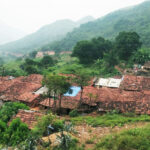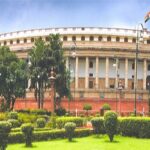The impacts of global warming on climate will be significant. As temperature warms, more moisture can be evaporated into the air. Semi-arid areas are becoming deserts because of increase in temperature which in turn evaporates critical moisture that is needed for the land.
We started realizing the impact of climate change during 1840s when indisputable evidence of former ice ages was obtained. The climate has altered sufficiently in many parts of the world even within the last few decades. It will affect the possibilities for agriculture and settlement. Reliable weather records have been kept only during the last hundred years or so. The standard interval adopted by the World Meteorological Organization for climatic statistics is thirty years:1901–30, 1931–60, for example. However, for historical records and proxy indicators of climate, longer, arbitrary time intervals may be necessary to calculate average values.
The present climatic state is usually described in terms of an average value (arithmetic mean, or the median value in a frequency distribution), a measure of variation about the mean (the standard deviation, or interquartile range), the extreme values, and often the shape of the frequency distribution. A change in climate can occur in several different ways, for example, there may be a shift in the mean level, or a gradual trend in the mean values.
Global warming is the theory that states when greenhouse gases are added to the earth’s atmosphere, the result will be for increased average global temperature. The factors responsible for climate change are called Climate forcing. The variations in solar radiation, deviations in the earth’s orbit, mountain building & continental drift and changes in greenhouse gases concentrations are included in climate forcing. There are a variety of climate change feed backs such as positive feedback and negative feedback which can amplify or diminish the initial forcing. Some parts of the climate system, such as the oceans and ice caps, respond slowly in reaction to climate forcing because of their large mass. Therefore, the climate system can take centuries or longer to fully respond to new external forcing.
The main greenhouse gas that is of concern is Carbon Dioxide. Moreover, among greenhouse gases, methane is up to 20 times more effective in trapping heat in the atmosphere than carbon dioxide. It is created from a variety of natural and human-influenced sources which include landfills, natural gas, and petroleum sources. The scientists calculated the animals would have collectively produced more than 520 million tonnes of methane a year-more than all today’s modern sources put together. Theglobal temperature increases due to deforestation and forest fires. The replacing of trees and vegetation with pavement also contributes to warmer surface temperature.
The impacts of global warming on climate will be significant. As temperature warms, more moisture can be evaporated into the air. Semi-arid areas are becoming deserts because of increase in temperature which in turn evaporates critical moisture that is needed for the land. Dry climates are becoming drier and wet climates are becoming wetter. With more moisture evaporating into the air, where it does rain, the rain is more intense. This creates extreme flooding in areas the moisture adverts into and rains out. The decline in monsoon rains leads to weak river dynamics and play a critical role both in the development and the fall of any civilisation.
Furthermore, air and water pollution can be directly attributed to the livestock sector and these are the largest contributor to global water pollution. Further amplifying water and air pollution, global livestock produce seven to nine times more sewage than humans most of which is left untreated. They also discharge pesticides, antibiotics and heavy metals into water systems.
More extreme temperature and precipitation can prevent crops from growing. Extreme events, especially floods and droughts, can harm crops and reduce yields. Heat stress affects animals both directly and indirectly. Over time, heat stress can increase vulnerability to disease, reduce fertility, and reduce milk production. Drought may threaten pasture and feed supplies. Climate change may increase the prevalence of parasites and diseases that affect livestock. The earlier onset of spring and warmer winters could allow some parasites and pathogens to survive more easily.
Recent analysis shows that 2016 is the hottest year and so, every year seems to be hottest as compared to the years already passed. It is believed that these extreme weather phenomena are mainly due to the rise in global temperatures. Due to climate change, natural disasters are in increasing trend. Natural disasters affect countries large and small, rich or poor, whatever their political persuasion. The toll exacted by natural calamities each year drains the human and economic resources of every nation and stands as one of the formidable barriers of national, regional and world development. It is well known fact that natural disasters are acts of God but losses due to them are acts of man.
The factors contribute to this growing potential for disaster are: 1. Rise of world population and concentrate in large cities and other areas of high risk, 2. Increased capital development has accompanied population growth, 3. We human beings disturb our natural environment, 4. Our vulnerability is due to hazardous dwellings and public buildings in use today and 5. Disasters today are shared events with repercussions far outside the affected area.
Odisha is one of the most disaster-prone states of India as well as also in the world. In view of its tropical location and the long coast line, Odisha is vulnerable to major natural hazards like Cyclones, floods, heat waves, cold waves and droughts. Due to global warming, there is decline in monsoon rain in Odisha especially for last 4 to 5 years and rainfall is also not uniform in the whole monsoon season. So, both drought and flood are experienced in the monsoon season as in case of 2010 and 2011 monsoon rain. Untimely heavy pouring is caused due to climate change and which is responsible for the damage of crops in Odisha.
Odisha is a flood prone state and predominantly a flat deltaic and river-irrigated land. It faces flood every year during monsoon. Unprecedented floods in 2008 and 2011 in Mahanadi speaks about the devastating phenomena in Odisha.While normal monsoon floods are beneficial for the state, severe floods damage agriculture, infrastructure and also human lives.Heat wave is a recurring phenomenon in Odisha, so also lightning hazzards.
The Government will have to take the lead in disaster prevention and reduction and mitigating their impact, enhancing the awareness of the coping mechanisms among the people. The Farm Research institutions have to invent new varieties of seeds and breeds to meet the food requirement of the increasing population.







































